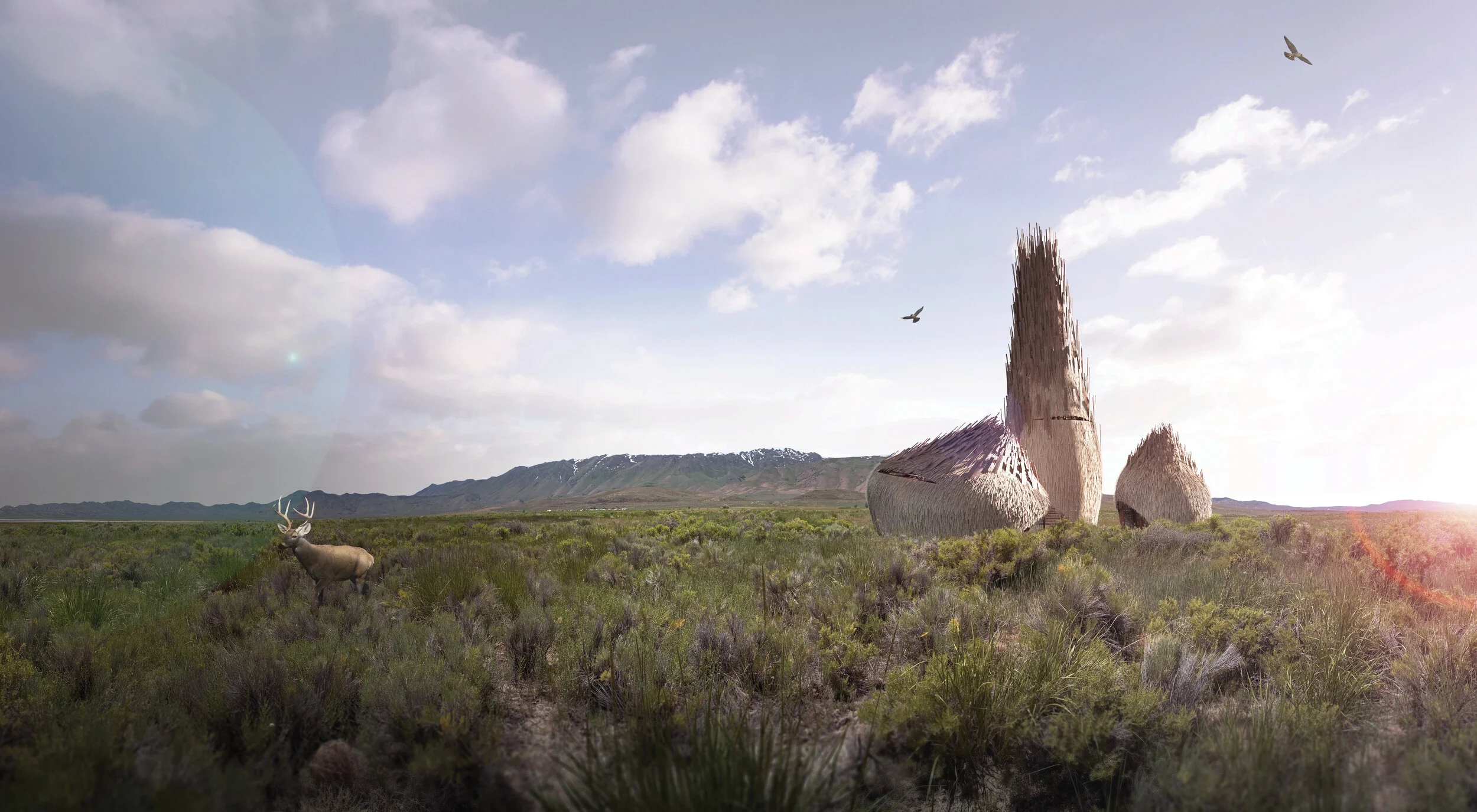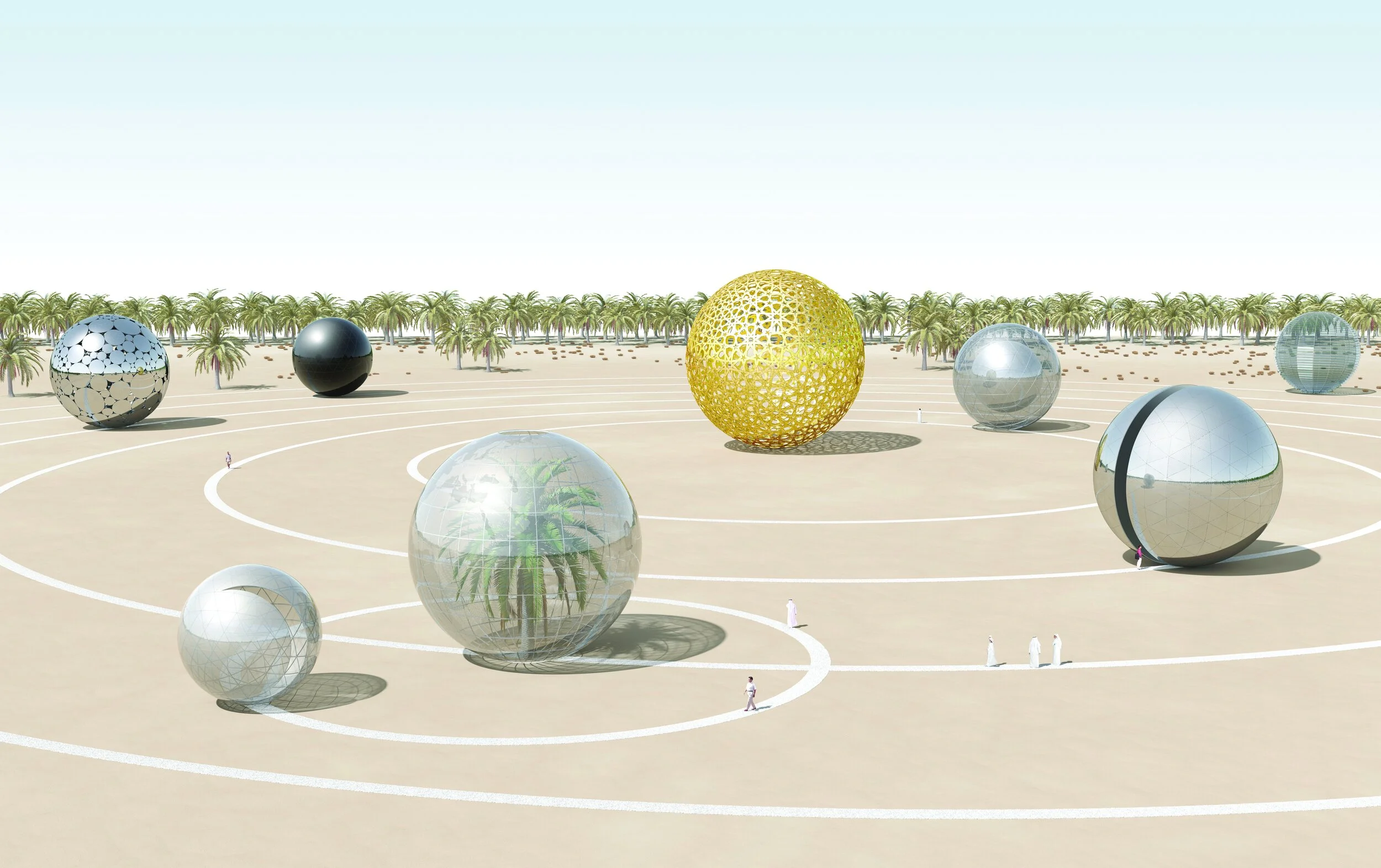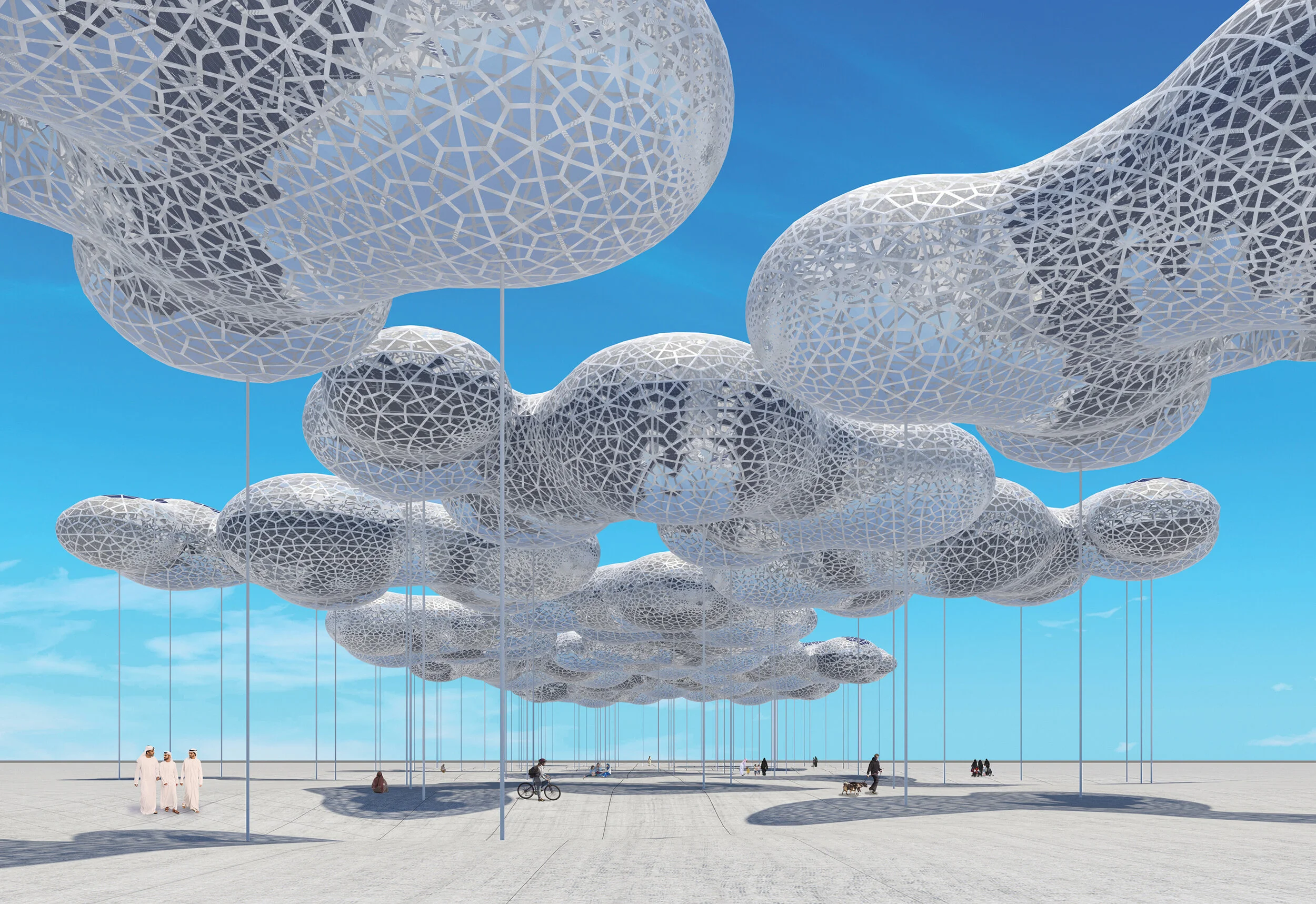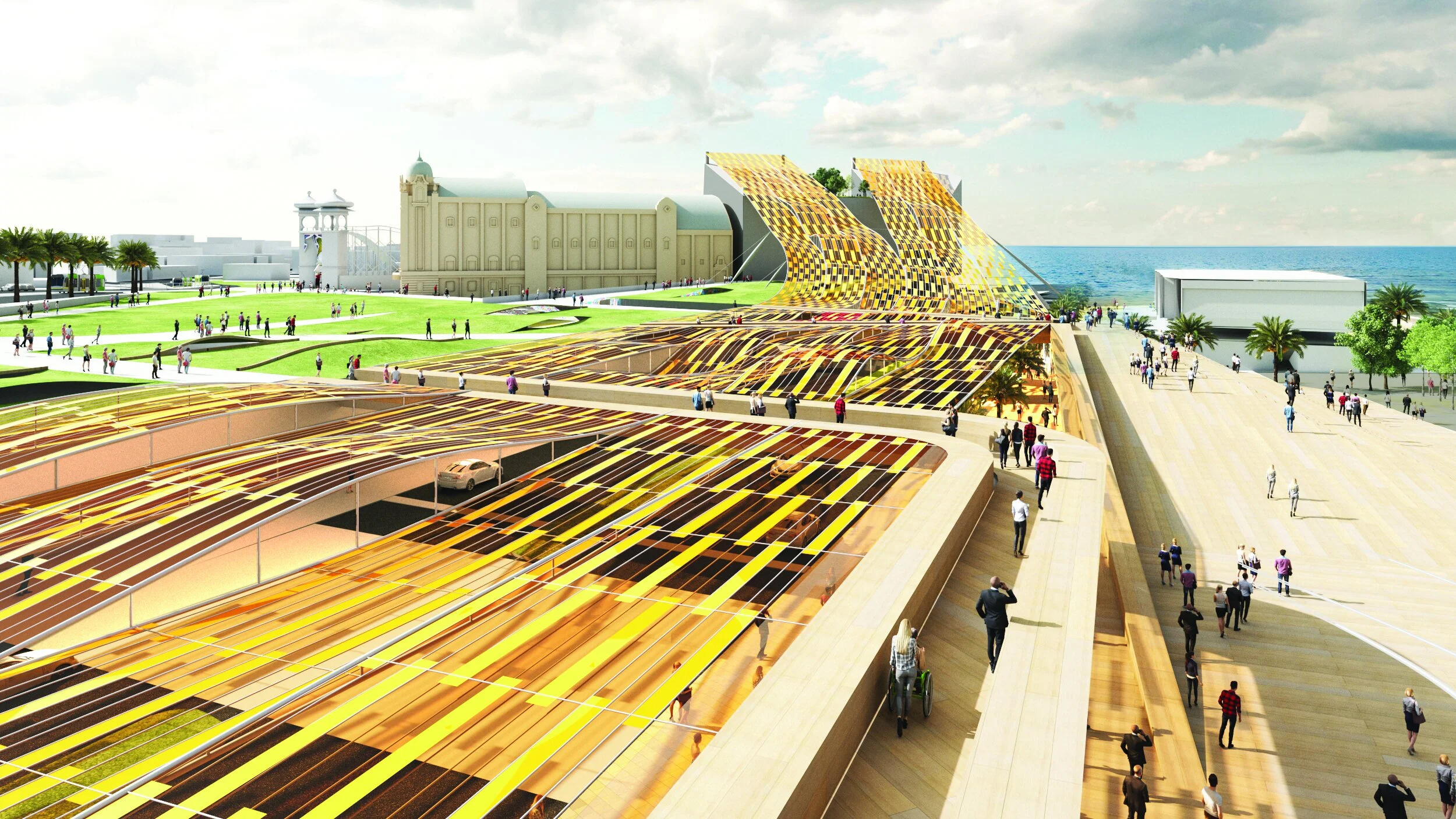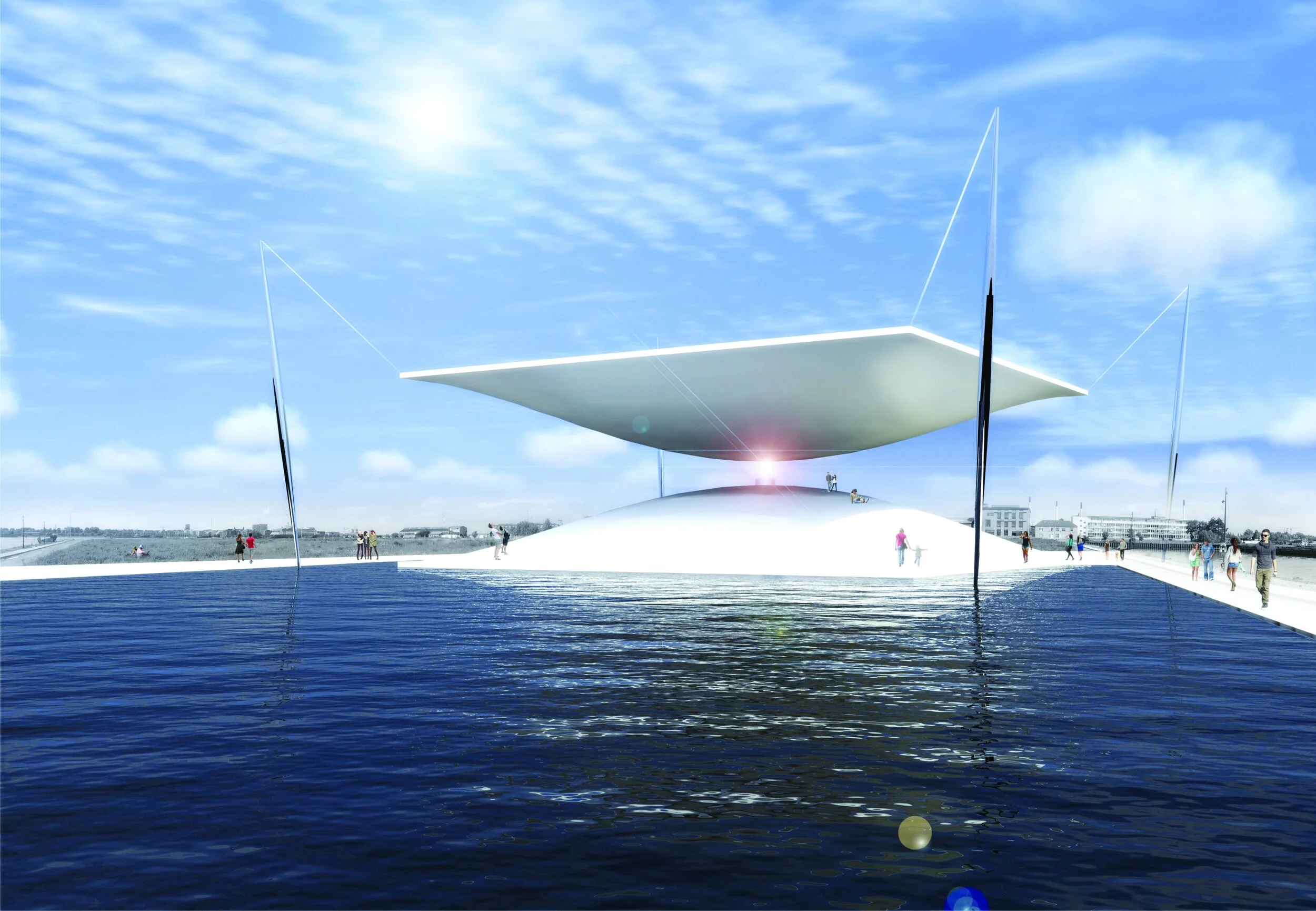Land Art Generator
Interview with Elizabeth Monoian & Robert Ferry
Could you briefly explain the driving force/motivation behind your work?
Our four primary motivations are to bring forward solutions to address the climate crisis, to help accelerate our transition to a post-carbon economy, to build a catalog of regenerative artworks for different site typologies, and to expand the socioeconomic and cultural benefits that the energy transition can provide communities. We wanted to help shift the public debate over climate change away from the doom and gloom of the inconvenient truths and away from the notion that a future free from carbon emissions would be an economic drag or require a sacrifice of our way of life. Rather, the post-carbon future is something that we all should desire because it is one of beauty, abundance, and human thriving—full of culture and creativity. By merging the worlds of energy development and community development—by engaging the public in the design of their own energy landscapes—we can open new opportunities for distributed energy projects in cities, increase the resilience and reliability of our energy system, reduce energy costs, and support urban livability, food security, racial and economic justice, and community development.
Please talk a bit about the process of your work.
When we founded the Land Art Generator Initiative in 2008, we were inspired by the land art movement of the 1960s. We were recent expatriates to Dubai, where the landscape, the thriving art scene, and the ambition of that time and place were infectious. We imagined destination art as an energy landscape—utility-scale power plants would be transformed into experiences, into public artworks, into places of creativity and inspiration. We launched the first LAGI design competition in 2010 for three sites, one in Dubai and two in Abu Dhabi. The incredible ideas that resulted from that inaugural event were featured at the Masdar pavilion at the 2011 World Future Energy Summit.
Since 2010, we have held six more design competitions for various site typologies in cities around the world. Each project begins with public engagement and co-development of a design brief with community stakeholders. The anonymous selection process includes technical review, local shortlisting, and an interdisciplinary jury of international experts.
In parallel with LAGI international design competitions, we have also focused on the implementation of smaller-scale community energy projects, such as Land Art Generator Solar Mural artworks, as a part of educational programming and/or in a co-design process with local creatives.
In essence, what kind of change or transformation is your work pursuing, and are there any examples of where it is succeeding, or different places where your work is unfolding?
We are inspired by the participation of artists and creatives in the design and implementation of the American Works Progress Administration era infrastructure, the rugged remnants of which we rely on to support our economy nearly 100 years later. The Hoover Dam, providing 4.2 terawatt-hours of clean electricity every year, is adorned with the artwork of Denver artist Allen Tupper True and Norwegian-American sculptor Oskar J.W. Hansen. 10,000 artists were employed by the federal government to help design a century of infrastructure. They helped to guide American culture through our recovery from the Great Depression, gilding the electrical power infrastructure and our civic public buildings with their art, and defining an era with stories, beauty, relevance, and creativity.
The new infrastructure required to draw down carbon presents a golden opportunity to create new landmarks and experiences, full of narrative, beauty, and messages of hope—places where future generations will come to reflect on this defining moment we are now living through.
No less than the radical integration of energy systems into the fabric of our built environment and our creative culture is a prerequisite for meeting the goals that we must achieve to avert the worst effects of climate change. When we are designing for a 30-year time horizon to reach a net-zero economy (to stay under 2 degrees of warming), and when the life cycle of projects is a minimum of 30 years, reaching ecological regeneration must be the standard of all design proposals, and public policy should adequately incentivize that standard.
The designs within the Land Art Generator Initiative portfolio demonstrate how we can co-create a beautiful and regenerative future, providing the infrastructure for human thriving in harmony with nature and cultural ecology.
